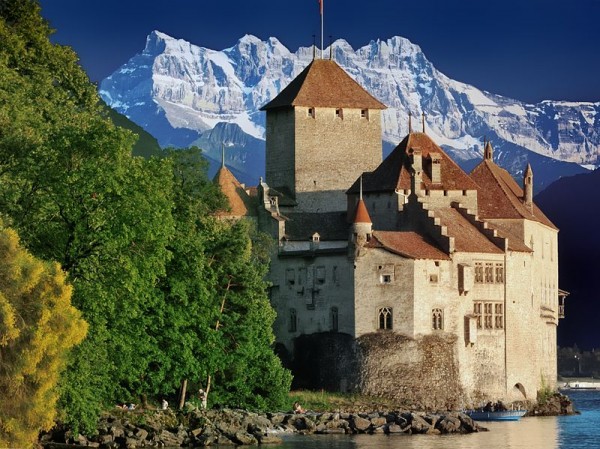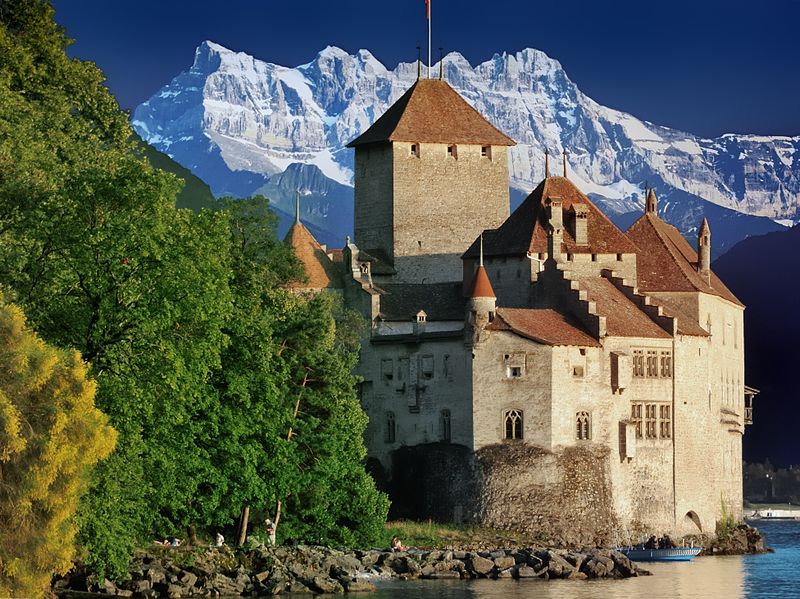Chateau de Chillon ( pron. Shee yon ) is one of the most beautiful and well preserved medieval castles in Switzerland. The remarkable state of preservation is its most noticeable asset, the chateau has never been destroyed in war or otherwise damaged. It has always been stayed in, and has been maintained through out the years. The castle is, as a result, as much a joy now, as it was in its glory years. The castle was enlarged in the current state by the Savoy family. The castle was at that time at a prime location, at the crossroads of a major trade link that included Rome, France and England. The red cross on the towers is the coat of arms of the Savoy family.

Chateau de Chillon was the residence and fortress of the House of Savoy, and it was incorporated with status symbols of that time, such as four huge halls. There were huge lake view windows here that were impractical, although they had a powerful navy that could defend against water attacks. The castle was conquered in the year fifteen thirty six, by the Bernese, who captured the castle in just two days, and made the Château the official residence of the governor. Chateau de Chillon castle also functioned as a Counter Reformation prison. The revolution in Paris inspired the French speaking people in Lake Geneva, and kicked out the Bernese in seventeen ninety eight. The castle was then passed on to the hands of the present owners, the Canton of Vaud.
Chateau de Chillon has been under use for many purposes, from using it as a hospital, to a prison, to a warehouse to an armory, the castle is now among the major tourist attractions in Switzerland. Chateau de Chillon castle was first drawn attention to, by the writings of Rousseau. After that, Romantics such as Victor Hugo and Lord Byron were inspired to visit the castle. There were a number of other famous visitors, including Goethe, Dickens and Hemingway.
The Chateau has a whole number of sights to see, the weapons on display, the mobile furniture in swiss style, the dank prison, the tingly views of the castle, and a whole number of others. There is even now a carving of Lord Byron’s name on a pillar which he ad carved when he came here. The story of Bonivard, the renegade Savoy who was tortured in the castle for more than five years, inspired Lord Byron, and led him to wite the “Prisoner of Chillon”
